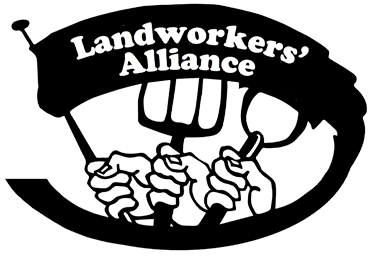Review by Rebecca Laughton, Horticulture Campaigns Coordinator
As a member of LWA you are probably already committed to avoiding agrochemicals. How much do we all know, however, about why herbicides such as glyphosate are to be avoided? My motivation for reviewing this book was to understand the problems associated with this weedkiller, which has been lauded by many as environmentally innocuous due to its rapid breakdown. I have not been disappointed! An endorsement on the front cover compares “Toxic Legacy” to Rachel Carson’s book, “Silent Spring”, a seminal book in the 1960’s environmental movement that contributed to the banning of the pesticide DDT.
I am no biochemist, and approached “Toxic Legacy” with some trepidation. After the introductory chapters, cataloguing the environmental and health problems in which glyohosate is implicated, the book proceeds into some detailed science that certainly challenged my A-level biology knowledge. Chapters on the connection between glyphosate and neurological conditions, such as autism and alzheimers disease; reproductive disorders; and chronic fatigue syndrome, are meticulously referenced and weave a fascinating web of insight into the intricate connections between plant and human life. This is not easy bedtime reading. Throughout the book, however, Seneff is aware that the reader may need help to navigate the biochemistry, and takes care to make the science accessible. Many valuable insights can also be gained from reading the book at a more superficial level.
Far from being a rapidly broken down herbicide that causes minimal environmental harm, Seneff cites research showing how persistent it is. She demonstrates how glyphosate threatens plant health, bats, amphibians, reptiles and human health; how it contributes to algal blooms and eutrophication; and undermines aquatic food webs. She cites experiments which implicate glyphosate in the decline of earthworm populations, the monarch butterfly, frogs, toads and other amphibians and colony collapse disorder of bees. These problems may not be surprising to a seasoned environmentalist, but the role of glyphosate in many problems which have become prevalent in recent decades is particularly chilling.
Central to understanding why a herbicide threatens human health is its toxicity to the gut flora upon which we all depend. Glyphosate disrupts the shikimate pathway, a metabolic pathway that plants use to produce proteins, vitamins, hormones and neurotransmitters. Our bodies rely on our food sources and the enzymes of the shikimate pathway in our gut flora to produce amino acids, which are the building blocks of other molecules that play a critical to our health, including many of the B vitamins; thyroid hormone and seratonin. Glyphosate molecules get taken up by proteins, due to their similarity to glycine, one of the 20 coding amino acids. Such substitution is leading to the creation of faulty proteins in animals and humans, resulting in a host of diseases from muscle and joint issues to autoimmune conditions, such as lupus and coeliac disease.
The final chapter of the book provides an optimistic and empowering ending, setting out a list of actions that people can take to reduce glyphosate exposure and reclaim their health. Unsurprisingly, these include choosing local, certified organic vegetables and grass-fed meat. “Toxic Legacy” is a powerful piece in the jigsaw of evidence pointing towards why agroeocological farming and a rapid transition away from chemical farming is a solution for improving both human and environmental health. This book takes some effort to read, but the investment in time and application is most certainly worthwhile.
Toxic Legacy is out now. Where possible please buy from your local independent bookshop or buy from this link where 10% of the price goes to support a local bookshop and 10% goes to the LWA.

